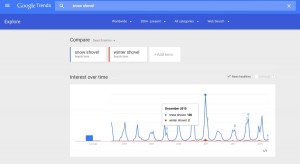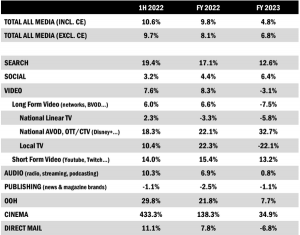
The recent news of Google’s logo change made headlines, even though the move was fairly subtle — from a serif to a sans serif, a tweak of the colors and other shifts. The reason, according to Google’s official blog, was for an evolving Web world:
“… We’ve taken the Google logo and branding, which were originally built for a single desktop browser page, and updated them for a world of seamless computing across an endless number of devices and different kinds of inputs (such as tap, type and talk). It doesn’t simply tell you that you’re using Google, but also shows you how Google is working for you.”
Given the ubiquitous nature of Google, it makes sense that a shift would create a buzz. And, of course, Google is on a different scale than a typical startup. But it’s still important for small business owners to take the right approach in creating a logo. Here are a few things to consider in creating the right look for your business.
Think it through.
The various elements of a logo — the typeface, color, use of icons or images — should logically connect to the business itself. A story on kabbage.com recommends writing out the message the business itself conveys.
“The purpose of a logo is to give visual form to your business’ identity. Knowing exactly what you want to express to customers is essential when choosing a logo, especially for a small business. Smaller companies typically only advertise online or in print publications. It’s giants like Nike and Apple that get commercial spots and billboards. Your logo should rise to the challenge of making a mark on a potential customer’s memory, even if they only see it for a nanosecond browsing the web.”
Know the fundamentals.
A small business owner might get overly ambitious about a logo. Focusing on what’s important — and often what is the simple solution — is a better way to go, according to Kern Lewis in a story for Forbes.
“For small and medium-sized businesses, spending a lot of time, energy and money on logo design is off-target; you will never present it to enough people enough times to build it into a consumer short-cut. Recognizing that, small businesses should design a logo that is:
- Tasteful
- In keeping with your industry
- Not too clever (use graphics that are timeless and have a good chance to age well)
- Square rather than linear design to better present itself online
- Clearly identifies your company name as its central feature
Hit those marks, and you can forget about redesigning it for years! Focus instead on making your logo represent something valuable in the consumers’ minds.”
Think versatility.
You may envision a logo outside a brick-and-mortar shop, or maybe a “street team” T-shirt. But it’ll need to stand out — and make sense visually — in more places than that, according to Caitlin Friedman and Kimberly Yorio in a story for businessknowhow.com:
“Your logo must look good on a variety of promotional materials, including letterhead, business cards, signs, stickers, magnets, or even a web site, so make sure it is versatile. Also, be sure it will show up when faxed or photocopied.”
Consider crowdsourcing.
There are plenty of websites and artist-oriented groups that can develop a logo for a fee. Taking this crowdsourcing approach can have multiple benefits. You may end up with a slew of creative options that you wouldn’t have from in-house staff. And the process may help to build a buzz, as Brian Hughes writes for smallbiztrends.com.
“When you crowdsource a design, you first get to review all the options,” he says. “Once you’ve narrowed it down to a handful that you like, you can then invite friends and colleagues to vote on their favorite design. Post a link on Facebook or Twitter to get customers, clients and fans in on the voting. Not only do you benefit from a wide range of feedback outside your immediate bubble, but savvy businesses can also use this as a free PR opportunity.”
Business & Finance Articles on Business 2 Community(131)
Report Post





